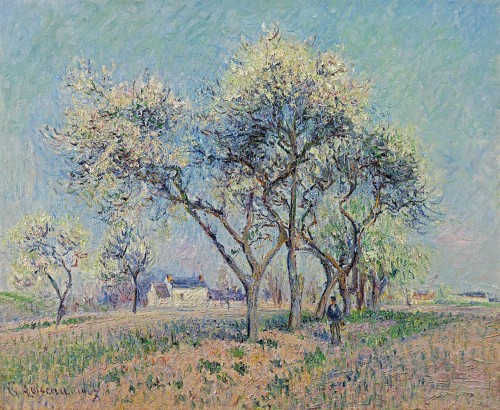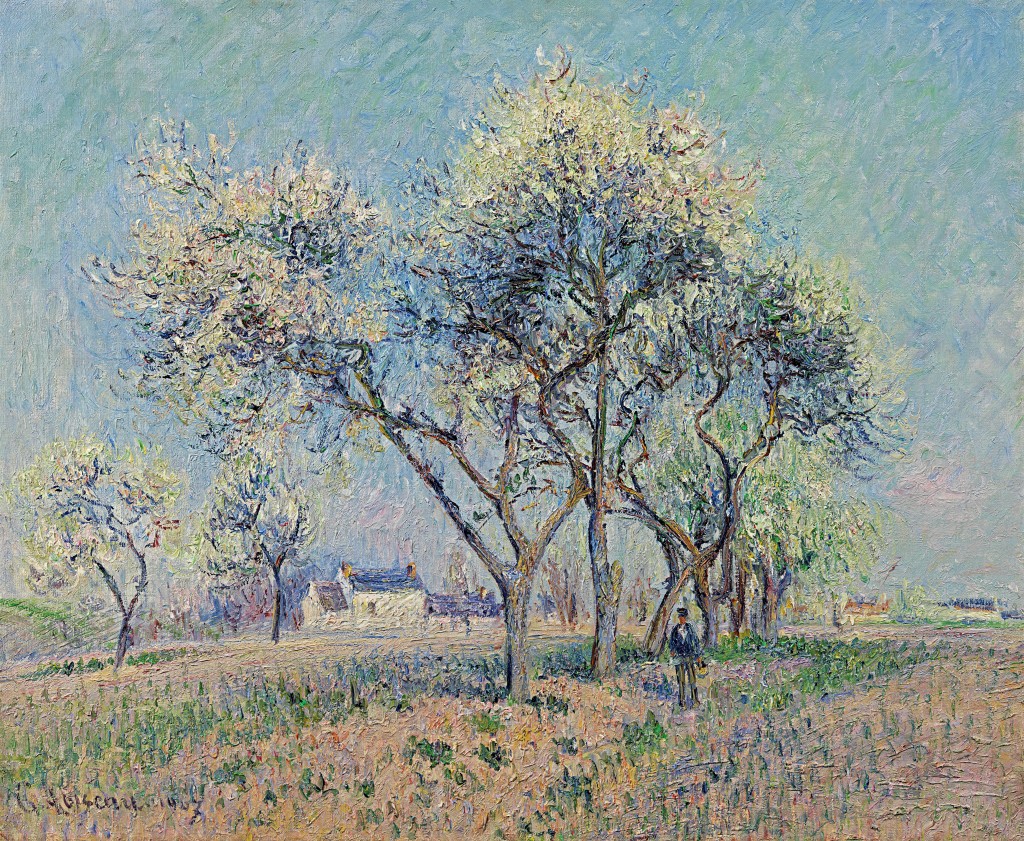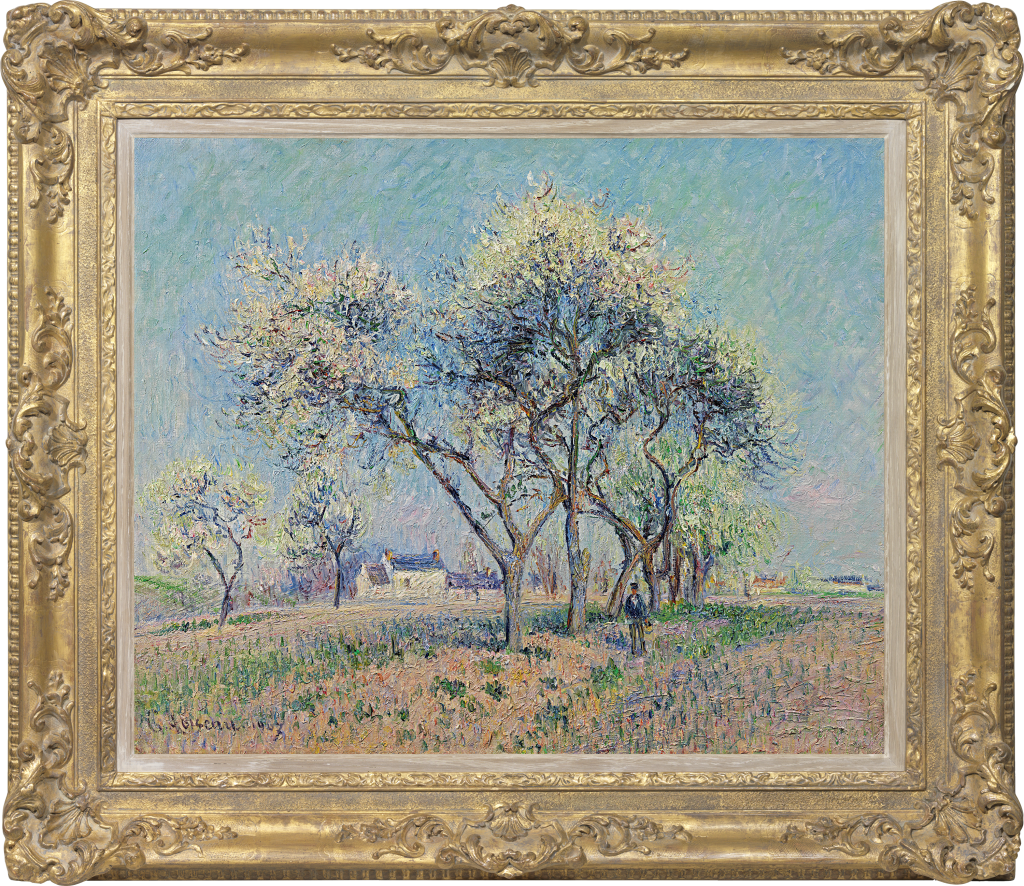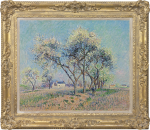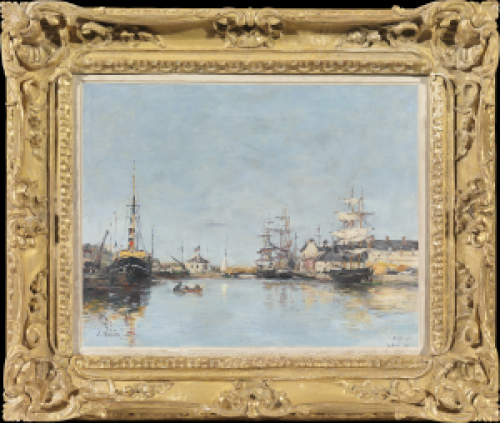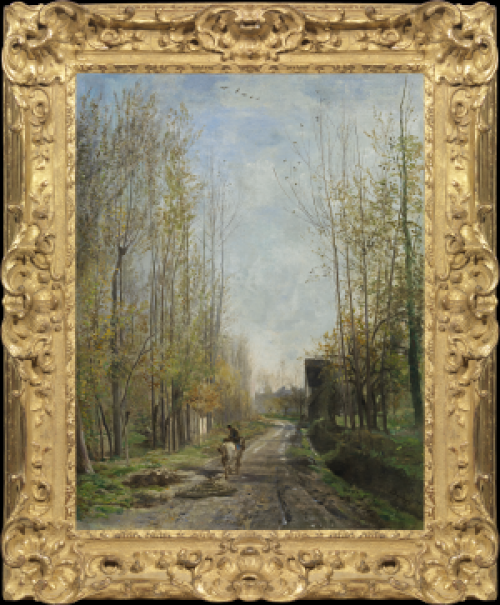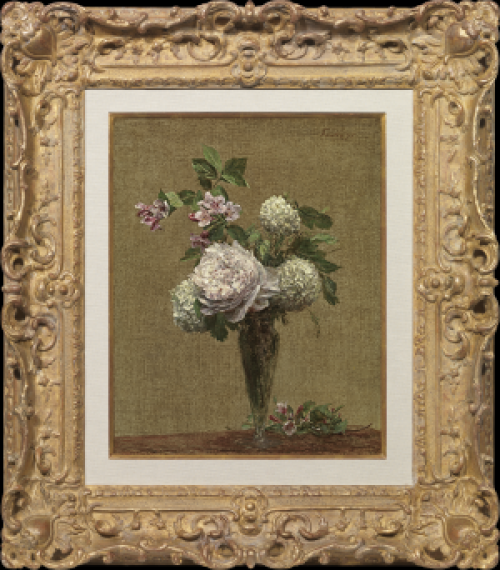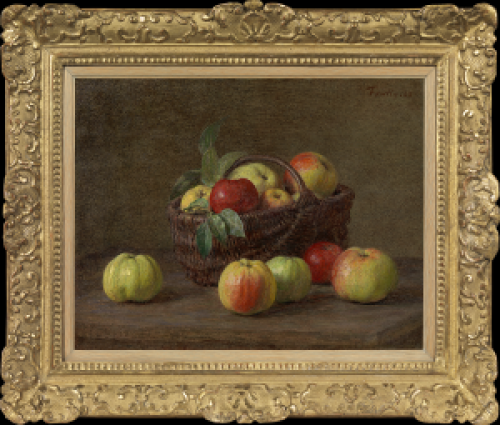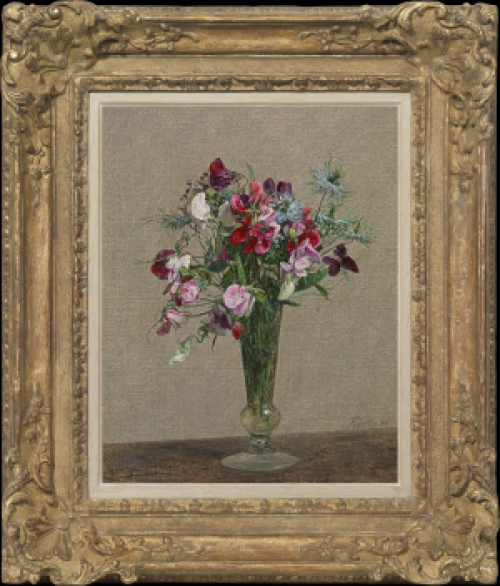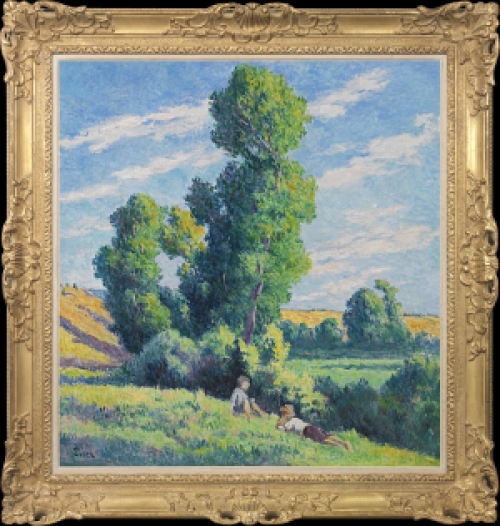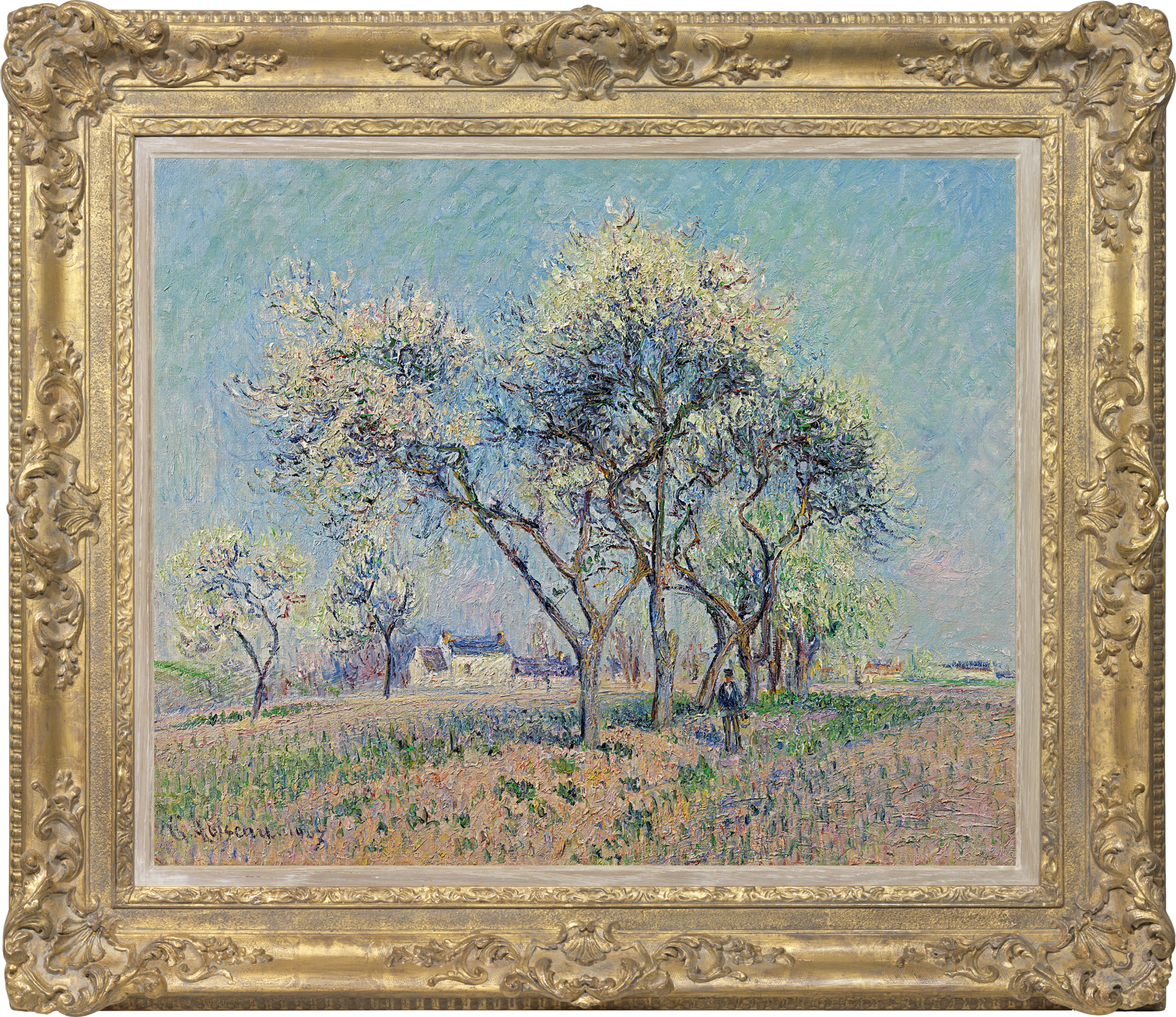GUSTAVE LOISEAU
1865 - Paris - 1935
Ref: CC 146
Pruniers en fleurs, Ennery
Signed and dated lower left: G Loiseau 1907;
inscribed on a label on the stretcher: Pruniers en fleurs / Ennery / 1907
Oil on canvas: 23 5/8 x 28 ¾ in / 60 x 73 cm
Frame size: 32 ½ x 37 ½ in / 82.6 x 95.2 cm
In its original Louis XIV style composition frame
Provenance:
Galerie Herman, Paris, circa 1985-90;
private collection, France, acquired from the above;
by descent in a private collection, France
To be included in the catalogue raisonné of the work of Gustave Loiseau being prepared by Monsieur Didier Imbert, inv. no.A 343
Like many French artists, Gustave Loiseau divided his life between a studio in Paris, necessary for meeting dealers and colleagues and attending exhibitions, touring in search of new motifs, and spending time in a part of the country with familial associations. For Loiseau, this was Pontoise, on the river Oise about twenty-two miles north-west of Paris. Loiseau’s father, a butcher, had moved to the Ile-Saint-Louis in the centre of the capital in 1870, when Gustave was five. His parents retired and moved back to Pontoise a decade later, allowing Loiseau to explore the gentle, fertile rural landscape around the town, which had provided such a rich fund of subjects for Camille Pissarro when he lived there in the 1870s and early 1880s.
Fruit tree blossom is a herald of spring and was treated by Loiseau on several occasions, among them Pommiers en fleurs en Normandie, 1903 (Musée des Beaux-Arts, Reims). The present view depicts plum trees at Ennery on the edge of Pontoise. A froth of white blossom reaches up into a spring sky of tender blue. Loiseau makes a feature of the twisted branches of the venerable trees, influenced by Japanese prints and Chinese wall paintings, which often depict flowering plums. In both Japanese and Chinese culture, plum blossom symbolises hope and renewal, as the tree puts forth flowers before leaves in early spring, while temperatures are still low. Loiseau likewise celebrates the return of spring to his beloved terrain in northern France.
A blue-jacketed peasant stands beneath the trees, totally in harmony with the natural world. Loiseau evokes spring light by careful harmonies of pastel colours, from the exuberant burst of white flowers, to the shimmering sky, to the pink earth with its short, pale green shoots. In the distance are the white-walled, long and low houses of the village. In a world of rapid industrialisation, increasingly traversed by the motor car, Loiseau presents a vision of a serene, timeless rural way of life.
GUSTAVE LOISEAU
1865 – Paris – 1937
Gustave Loiseau is one of the most poetic and sensitive of the Post-Impressionists. His work shows the influence of Impressionist masters such as Alfred Sisley and Camille Pissarro and he briefly took advice from Paul Gauguin, whilst being a great admirer of Corot. Loiseau experimented with Pointillism, but developed his own style. He is considered to be a pure landscape artist, painting from direct observation of nature in a manner which is reminiscent of Claude Monet.
Loiseau was born in Paris, the son of a butcher from Pontoise who had moved to the Ile-Saint-Louis. He was apprenticed in 1880 to a painter and decorator, a job which he despised, but which confirmed his interest in art. Loiseau discovered the countryside of Pontoise when his parents retired there in 1881; a small legacy from his grandmother in 1887 spurred him to devote his life to landscape painting.
Loiseau studied at the Ecole des Arts Décoratifs and in 1889 at the studio of the landscape painter Fernand Quignon. Loiseau rented a room in a workers’ tenement, La Maison du Trappeur in the Rue Ravignon, Montmartre, which was later to become famous as the Bateau-Lavoir. He became acquainted with Jean-Louis Forain and Adolphe Willette, but his shy, nature-loving personality had little in common with the raucous bohemians of the Parisian art scene. In 1890 he went to Pont-Aven, staying at the famous inn run by Marie-Jeanne Gloanec, where he was befriended by Henry Moret and Maxime Maufra. Although working in a personal style, Loiseau’s paintings from this period show the influence of the Pont-Aven School in their diagonal compositions, shortened perspectives and anti-panoramic fields of view. Returning to Paris in 1891, Loiseau exhibited for the first time at the Fifth Exhibition of Impressionist and Symbolist Painters. He showed paintings at the gallery of Le Barc de Boutteville in Rue Le Pelletier, where two works were bought by the celebrated Rouen collector and friend of Monet, François Depeaux.
For much of his life Loiseau was based in Paris but travelled extensively through France, making repeated trips to Pont-Aven, where he was encouraged by Gauguin in 1894, to Normandy and to Pontoise. Described as ‘the historiographer of the Seine’, he also captured the shifting moods of the Oise and the Eure rivers and the Channel ports. Loiseau joined the Société des Artistes Indépendants in 1893. In 1897 he signed an agreement to sell most of his output to Paul Durand-Ruel, giving him the financial independence to travel more extensively. Loiseau divided his last years between Pontoise (where he is buried) and Paris, where he died in 1935.
The work of Gustave Loiseau is represented in the Musée d’Orsay, Paris; the Musée des Beaux-Arts, Rouen; the Ashmolean Museum, Oxford; the Marubeni Collection, Japan; the Metropolitan Museum of Art, New York; the Museum of Fine Arts, Boston and the Nelson-Atkins Museum of Art, Kansas City.

